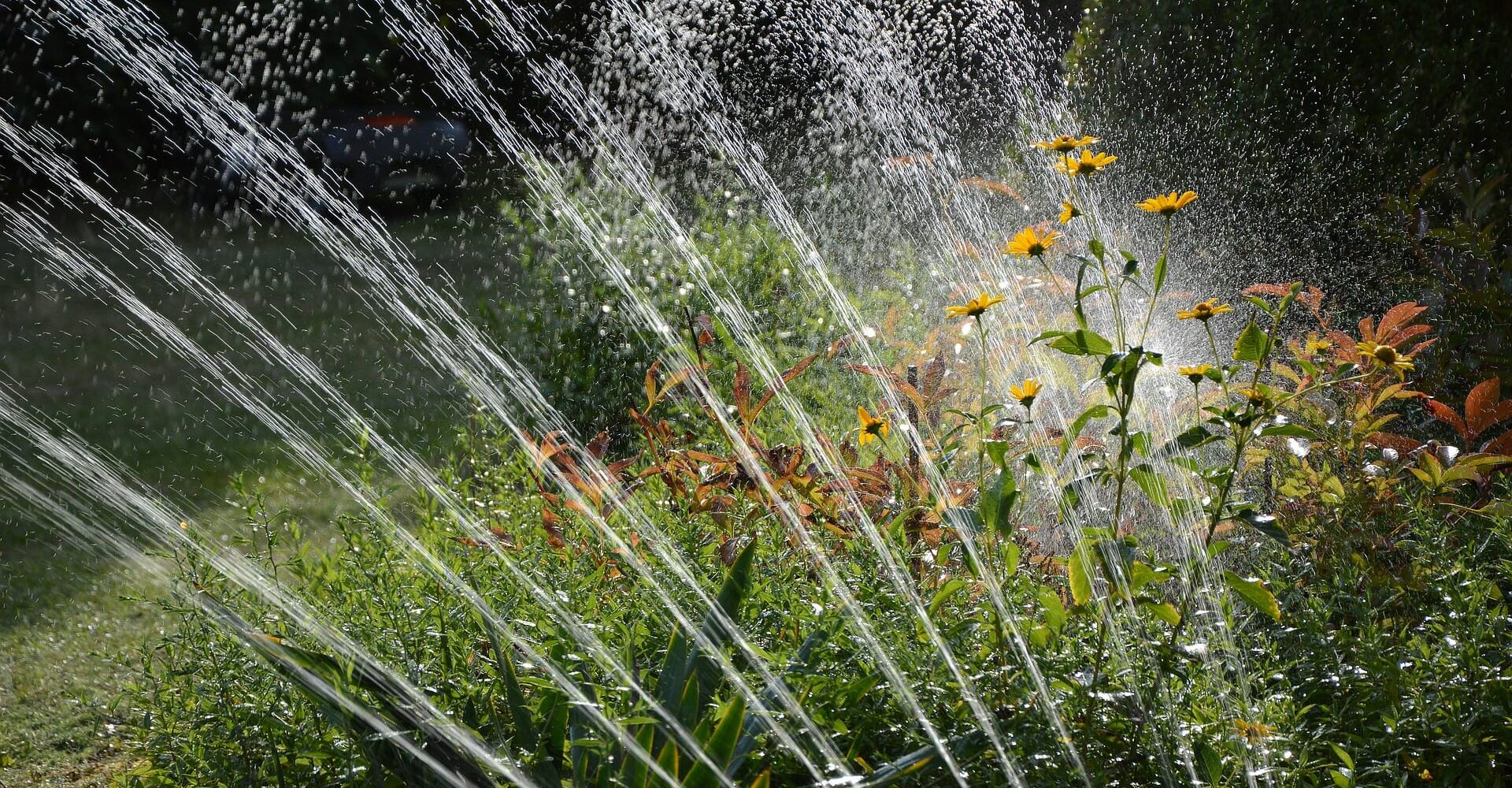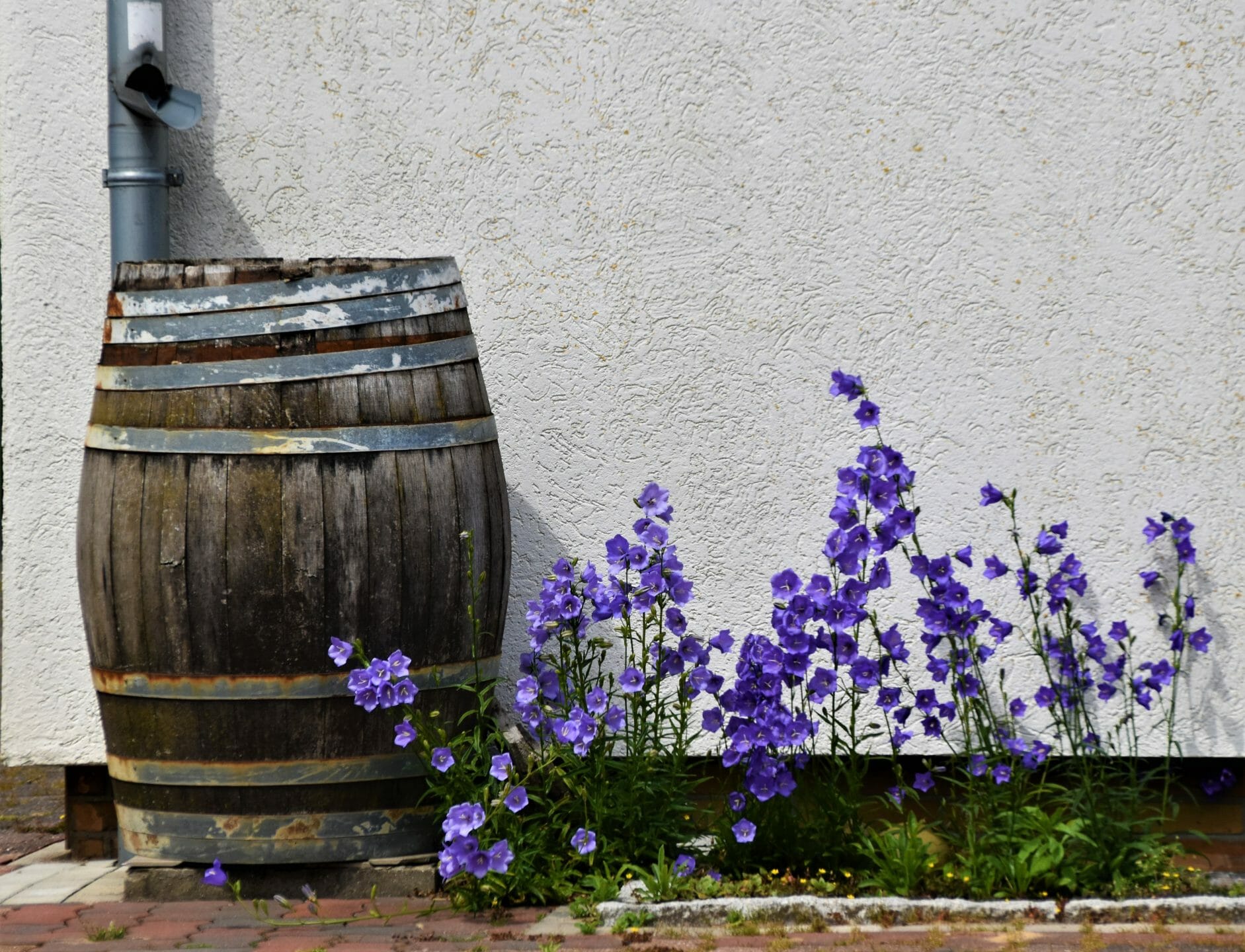
You may have heard that roughly 71% of our planet is water. But did you know that only 1% of water is accessible for consumption? That’s right– our entire earth depends on just 1% of water for all our needs.
A huge portion of water consumption is wasted on our gardens. This is why water conservation for landscaping is vital to protecting future generations. Especially since we currently live with a global water shortage.
The biggest mistake gardeners make with landscape watering is over-hydrating their plants. So, before we go over tips for how to conserve water in your landscape, we’ll discuss how often to water plants.
To avoid going overboard with irrigation, you should check your plant’s soil before giving it water. You can check the soil’s level of moistness by digging down to the roots to see if the surrounding soil is dry. If it’s still wet, you should hold off on irrigating.
But, if you’re working with clay or sandy soil, checking if the soil is damp won’t do you any good. This is because clay dirt can feel wet when it hasn’t been recently watered, and sandy dirt can feel dry right after irrigation. So, instead of checking the soil, you can determine if your plants are thirsty by observing the leaves. If the leaves are wilting or darkening in color, it’s time to water.
The time of day you water your landscape can make a huge difference in water conservation. Expert gardeners say the best time to apply irrigation is early in the morning or late in the evening. These times bring cooler temperatures and calmer winds, which slows the evaporation process. Thus, you won’t have to use as much water to hydrate the soil.
In addition to irrigating at the right times, there are many other ways to conserve water in your garden. We’ve highlighted some of our favorite water-saving techniques.
Adding a thick layer of mulch will reduce your landscape watering needs. So, if you’re wondering how to conserve water in gardening, mulching is a great solution. This is because mulch keeps the soil moist by preventing evaporation.
Known as water-saving plants, native plants require minimal irrigation. These indigenous plants don’t need more than the local rain to thrive because they grow naturally in your region. Thus, adding native plants to your garden is a smart landscaping idea for water conservation.
Drought tolerant plants are exactly what they sound like. They’re intrinsically adapted to thrive without much landscape watering. So, using these plants in your garden will have a significant impact on reducing water use.
Even those with the greenest thumbs struggle with the perfect way to water a garden. This is because different plants and types of soil each have their own specific needs. But, a general guideline for all plants and soils is to apply irrigation at the root zone. This limits evaporation because it allows the soil around the roots to soak up most of the water.
Landscape watering on the leaves encourages quick evaporation. As a result, over 80% of the water used will likely go to waste. It can also lead to leaf spot diseases. For this reason, you should always irrigate at the base of the plant.
Harvesting rain is an effective method for collecting water you can use for your garden. Plus, rainwater is free for everyone, and it contains minerals that benefit plants. So, why waste it?
The most common way to capture rain is by using a rain barrel.
Are you curious about how to save the water that falls from the sky? Using a rain barrel is a great way to conserve water. These barrels can hold up to 80 gallons of water that would otherwise squander.

To get the most out of a rain barrel, place it at the base of your gutters to capture the rain that trickles down your roof. The average roof receives thousands of liters of rainwater each year. This means that you’ll never be in short supply of water for your garden.
Pro-tip: Choose a rain barrel with colors and a design that fits your landscape style. This will allow your barrel to enhance the aesthetics of your garden. You can choose a design that makes your barrel a focal point or select colors that allow it to blend in.
Besides collecting rainwater, you can cut back on water usage by reusing the water in your own home. Take a moment to think about all the water you use every day in your daily routine. A few of the most common sources of household water usage come from bathing, laundry, cooking, and washing dishes.
Water that’s recycled from your home (referred to as gray water) promotes water conservation. You can use your gray water to apply irrigation to your garden. Using second-hand water for landscape watering is an easy way to water your garden when you follow these tips:
Don’t worry about bathing soaps or dishwasher detergents in gray water. They’re harmless to plants and won’t damage the soil structure. However, you should avoid using gray water that contains any bleach or disinfectants.
Sprinklers are a popular choice to have in yards. This is because they’re not labor-intensive, and they get the job done. But, at what cost?
Do you know how much water a lawn sprinkler uses? Sprinklers can use up to 1,000 liters of water in only 60 minutes! That’s about as much water as a family of four consumes in one day. So, how can we successfully water a yard without a sprinkler system?
As it turns out, lawns don’t need as much landscape watering as many people think. Allowing your grass to grow during dry spells helps keep the soil moist. Even if your yard begins to turn brown, it’ll most likely recover once it rains again. Brown grasses aren’t necessarily dead.
The easiest way to water a lawn effectively is with an adjustable sprinkler. This type of sprinkler provides a variety of distribution patterns to help avoid any wasteful runoff. Using an adjustable sprinkler lets you direct water where it’s needed most.
While non-adjustable sprinklers provide great coverage, they can’t target specific sections. This results in many yards receiving twice as much water as they need. Consequently, more water is wasted on lawns.
Sprinklers are not your friend in the garden. They can’t directly apply irrigation to the roots of your plants and end up mostly soaking only the leaves.
Though labor-intensive, landscape watering with a hose or can is the best way to irrigate your garden. Putting in the work to hydrate your plants will reward you with a beautiful lawn. Plus, you’ll be doing your part in conserving our planet’s water.
We don’t need as much water as we think we do to create a lush garden. So, we can follow these steps to cut the amount of water that’s wasted in landscapes to save this natural resource. Try out some of these tips when you’re gardening this year, and see how much water you’re able to save!